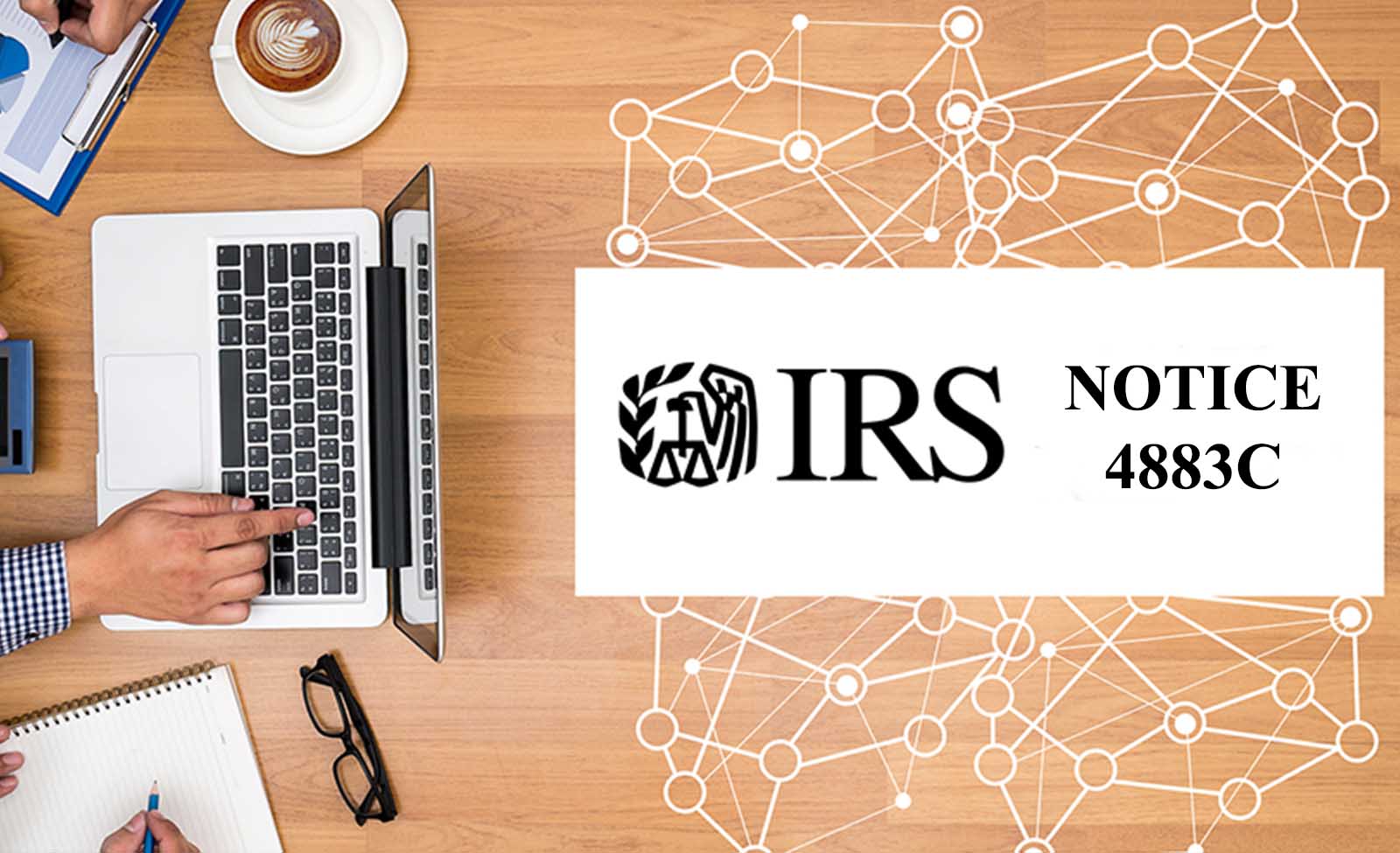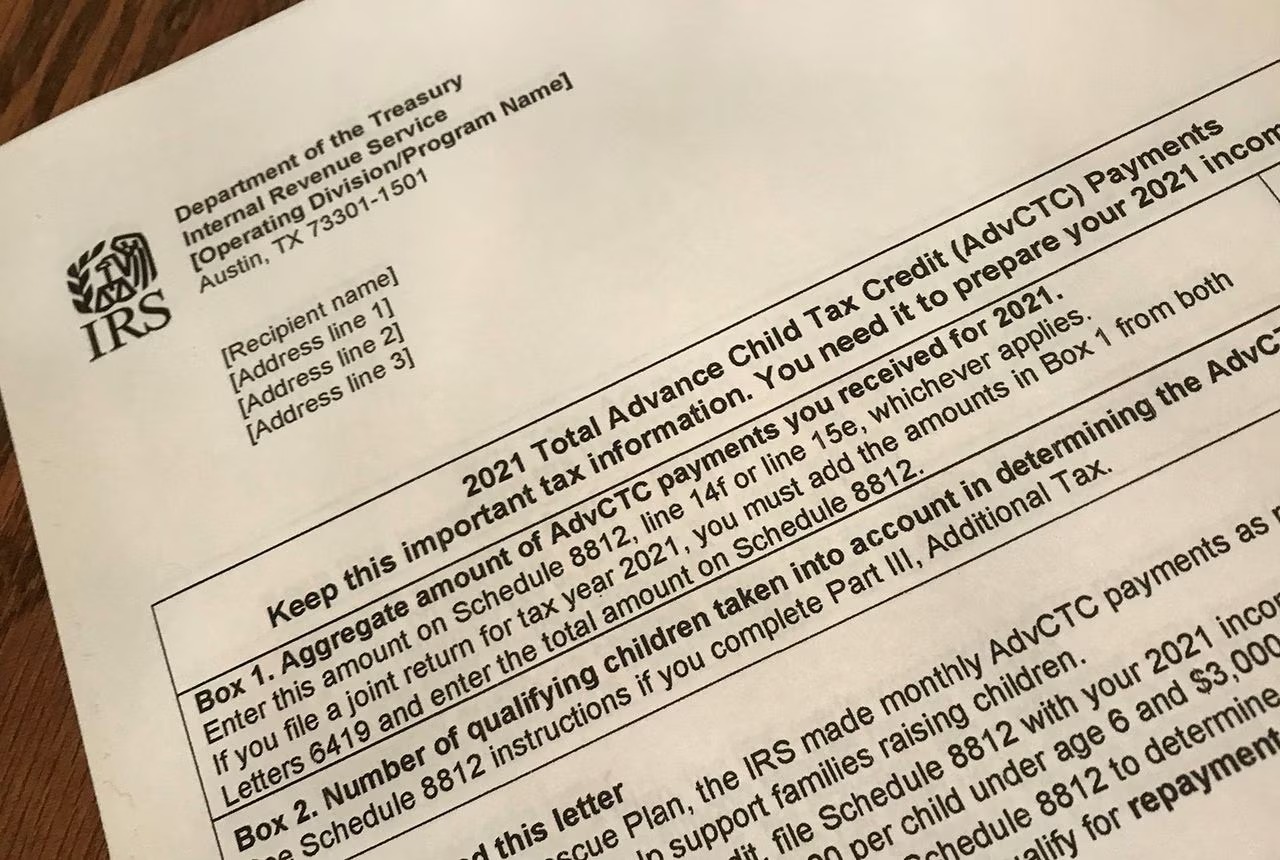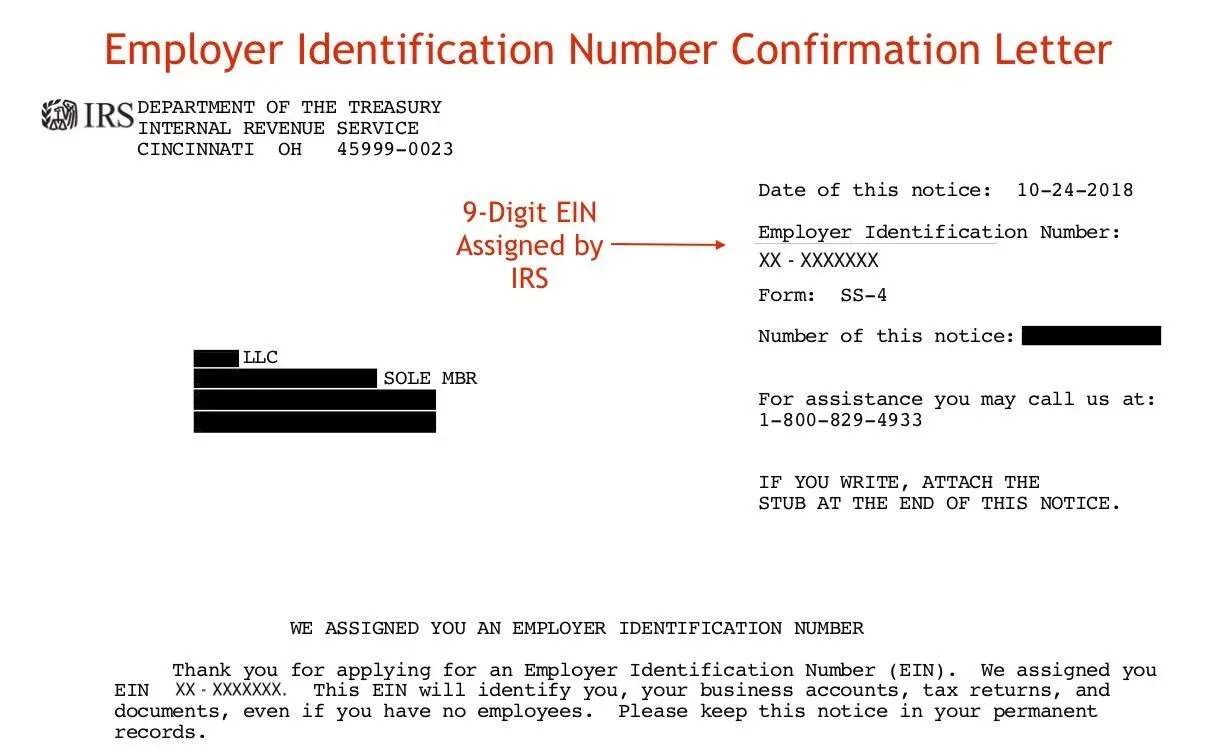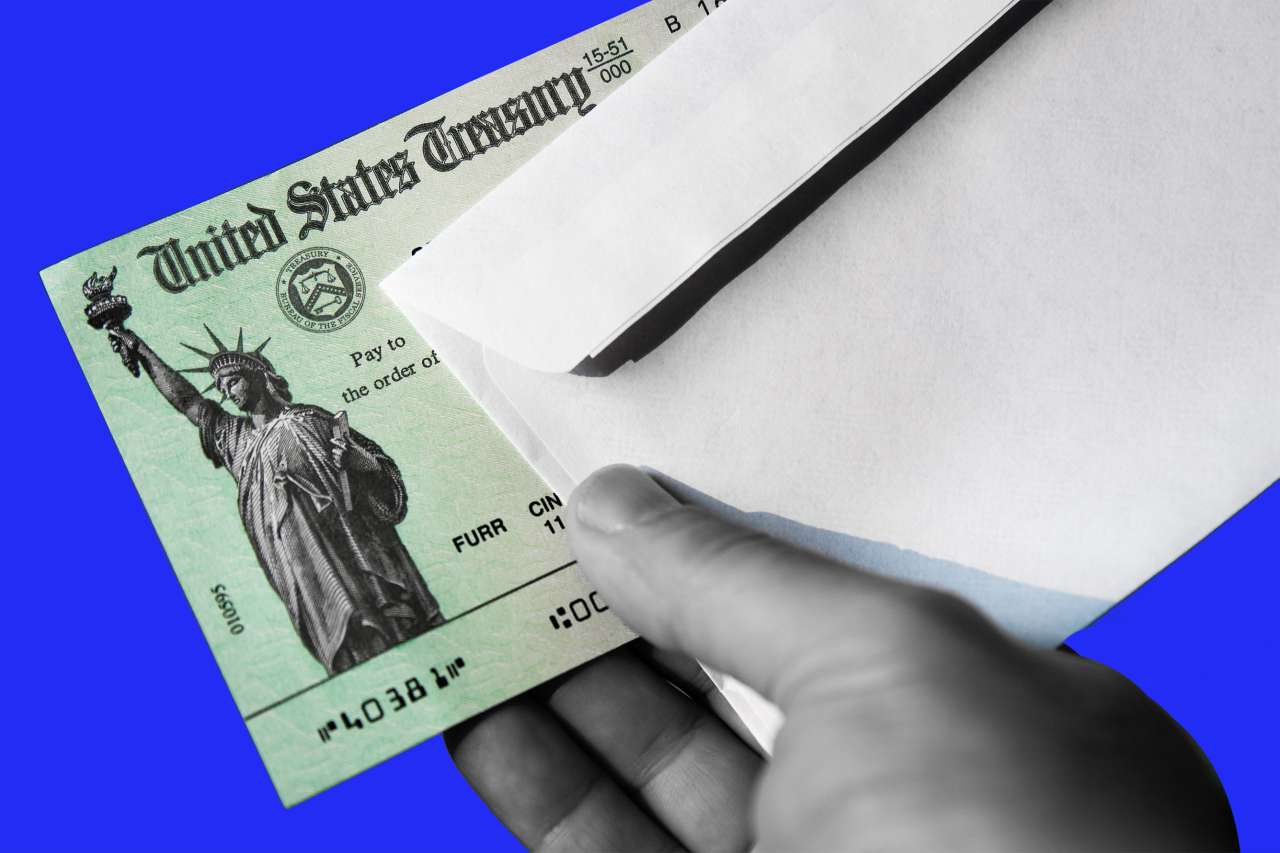

Finance
Why Did I Get A 4883C Letter From The IRS?
Published: November 1, 2023
Discover why you received a 4883C letter from the IRS and get clarity on your finances today. Don't let confusion hold you back.
(Many of the links in this article redirect to a specific reviewed product. Your purchase of these products through affiliate links helps to generate commission for LiveWell, at no extra cost. Learn more)
Table of Contents
Introduction
Receiving a letter from the Internal Revenue Service (IRS) can be a nerve-wracking experience, and when that letter is a 4883C letter, it can leave you feeling even more concerned. But what exactly is a 4883C letter, and why did you receive it?
The 4883C letter is a notice sent by the IRS to verify the identity of a taxpayer. It is an effort by the IRS to combat identity theft and protect taxpayers from fraudulent tax filing activity. If you are one of the many taxpayers who have received a 4883C letter, it is essential to understand why it was sent and what steps you need to take.
In this article, we will explore the reasons for receiving a 4883C letter and guide you through the identity verification process. We will also address common questions related to this letter to help alleviate any concerns or confusion you may have.
Understanding the purpose and process behind the 4883C letter is crucial for your peace of mind and ensuring compliance with the IRS. So, let’s dive in and shed light on this issue.
What is Form 4883C?
Form 4883C, also known as the “Income Verification Identity Confirmation Quiz,” is a letter sent by the IRS to verify the identity of a taxpayer. It is part of the IRS’s efforts to combat identity theft and protect taxpayers from fraudulent tax returns filed under stolen identities.
When the IRS suspects that identity theft may have occurred, they will send a 4883C letter to the taxpayer asking them to verify their identity. The letter contains a unique taxpayer identification number and information on how to proceed with the verification process.
The 4883C letter serves as a precautionary measure to ensure that the tax return filed under a specific taxpayer’s name is legitimate and not fabricated by someone else. By confirming the taxpayer’s identity, the IRS aims to prevent any potential unauthorized access to personal and financial information, as well as safeguard the taxpayer’s tax refund.
It’s important to note that receiving a 4883C letter does not necessarily imply wrongdoing or fraud on the part of the taxpayer. In many cases, it is simply a routine procedure to verify the authenticity of the tax return. However, it’s essential to take the letter seriously and follow the instructions provided to complete the identity verification process in a timely manner.
Common Reasons for Receiving a 4883C Letter
Receiving a 4883C letter from the IRS might leave you wondering why you were chosen for identity verification. While the specific reasons can vary, there are a few common scenarios that might trigger the issuance of a 4883C letter. Understanding these reasons can help provide some clarity:
- Patterns of Identity Theft: If the IRS detects patterns of identity theft associated with a specific taxpayer or taxpayer group, they may send a 4883C letter as a precautionary measure to prevent fraudulent tax returns.
- Inconsistencies in Tax Return Information: Discrepancies or inconsistencies in the information provided on your tax return, such as mismatched Social Security numbers or incorrect addresses, could trigger a 4883C letter.
- Previous Experience of Identity Theft: If you’ve been a victim of identity theft in the past, the IRS may send a 4883C letter to ensure that future tax returns filed under your name are legitimate.
- Unusual Financial Activity: Abnormal financial activity, such as sudden changes in earnings or unreported income, may prompt the IRS to send a 4883C letter to verify the accuracy of your tax return.
- Random Selection: In some cases, the IRS may randomly select tax returns for identity verification purposes, even if there are no specific red flags or suspicious activities associated with the taxpayer.
It’s important to remember that receiving a 4883C letter does not automatically indicate wrongdoing. It is simply a way for the IRS to ensure the integrity of the tax filing system and protect taxpayers from identity theft. By addressing the verification process promptly and providing the requested information, you can resolve the matter and proceed with your tax return.
Identity Verification Process
Once you receive a 4883C letter from the IRS, it’s crucial to begin the identity verification process promptly. The letter will provide instructions on how to proceed, typically involving one of the following options:
- Online Verification: The IRS will provide a secure online portal where you can complete the identity verification process. You will need to visit the specified website, enter the unique identification number provided in the letter, and answer a series of questions to confirm your identity.
- Phone Verification: If you prefer, you can choose to verify your identity over the phone. The 4883C letter will contain a toll-free number that you can call to speak with an IRS representative. The representative will ask you a series of questions to confirm your identity and resolve any concerns.
During the identity verification process, be prepared to provide accurate and detailed information to the best of your knowledge. The questions may cover various aspects of your personal and financial history, such as previous addresses, income sources, or loans taken out in your name. It is crucial to answer these questions truthfully and to the best of your ability.
Once you have completed the verification process, the IRS will review your responses and determine the validity of your tax return. In some cases, additional documentation or follow-up steps may be required. You will be informed of any further actions needed or if your return has been accepted.
It’s important to note that failing to comply with the identity verification process may result in delays in processing your tax return or the potential cancellation of any refund. Therefore, it is crucial to follow the instructions provided in the 4883C letter and promptly complete the verification process.
Steps to Respond to a 4883C Letter
Receiving a 4883C letter from the IRS can be intimidating, but it’s important to remain calm and take the necessary steps to address the situation. Here are the steps you should follow to respond to a 4883C letter:
- Read the Letter Carefully: Start by carefully reading the entire letter to understand why the IRS has requested your identity verification.
- Verify the Letter’s Authenticity: Make sure the letter is legitimate by checking for the IRS seal, an official IRS contact number, and your taxpayer identification number.
- Follow the Instructions: The letter will provide instructions on how to verify your identity. Choose the method indicated, either online or by phone, and complete the necessary steps promptly.
- Gather Required Documentation: Before starting the verification process, gather any relevant documents that may be referenced in the letter, such as prior tax returns or identification documents.
- Provide Accurate Information: When answering questions or providing information during the verification process, be truthful and provide accurate details. This will help expedite the resolution.
- Complete Additional Steps, if Required: In some cases, the IRS may require additional documentation or follow-up steps. Be prepared to provide any requested information promptly.
- Keep Copies of Documentation: Make copies of all the documents you submit to the IRS for your records. This will help you in case there are any discrepancies or follow-up requests in the future.
- Follow Up, if Necessary: If you don’t receive any confirmation or resolution within a reasonable time frame, consider following up with the IRS to ensure your case is being processed.
- Keep Calm and Be Patient: Resolving identity verification issues with the IRS can take time. Remain patient throughout the process and avoid unnecessary stress.
By following these steps and diligently addressing the 4883C letter, you can successfully complete the identity verification process and ensure the smooth processing of your tax return.
Frequently Asked Questions
Here are answers to some frequently asked questions regarding the 4883C letter:
- Q: What should I do if I lost my 4883C letter?
A: If you have misplaced your 4883C letter, you can contact the IRS for assistance. They can provide you with the necessary information and guidance to proceed with the identity verification process. - Q: Will receiving a 4883C letter delay my tax refund?
A: Yes, the verification process may delay the processing of your tax return and any associated refund. It’s crucial to respond promptly to minimize any potential delays. - Q: What happens if I don’t respond to the 4883C letter?
A: Failing to respond to the 4883C letter can result in delays in processing your tax return or the potential cancellation of any refund. It’s essential to follow the instructions and complete the identity verification process. - Q: Can I appeal the 4883C letter if I believe it was sent by mistake?
A: Yes, if you believe that the 4883C letter was sent in error, you can contact the IRS to explain your situation and request a review. They will guide you through the necessary steps to resolve the issue. - Q: Is the information I provide during the verification process secure?
A: Yes, the IRS takes the privacy and security of taxpayer information seriously. The information you provide during the verification process is encrypted and protected to ensure its confidentiality.
If you have additional questions or concerns about the 4883C letter, it is recommended to contact the IRS directly for further assistance. They will be able to provide you with specific guidance based on your individual circumstances.
Conclusion
Receiving a 4883C letter from the IRS can be initially unsettling, but it’s important to remember that it is a routine procedure to verify the identity of taxpayers and combat identity theft. By understanding the purpose, process, and common reasons for receiving this letter, you can navigate through the identity verification process with confidence.
If you receive a 4883C letter, carefully read through the instructions and choose the appropriate method to verify your identity, either online or by phone. Provide accurate information and any requested documentation to expedite the resolution. Remember to keep copies of all submitted documents for your records.
- Responding promptly to the 4883C letter is crucial to ensure the smooth processing of your tax return and any associated refund.
- Keep calm and be patient throughout the process, as resolving identity verification issues with the IRS may take time.
- If you have any questions or concerns, don’t hesitate to reach out to the IRS for clarification and guidance.
By following the steps outlined in this article and cooperating with the IRS, you can successfully complete the identity verification process and alleviate any concerns regarding the legitimacy of your tax return. Remember, the 4883C letter is a precautionary measure undertaken by the IRS to protect taxpayers and maintain the integrity of the tax filing system.
Stay vigilant, respond diligently, and rest assured knowing that by verifying your identity, you are contributing to a secure and reliable tax system while safeguarding yourself against potential fraudulent activities.














